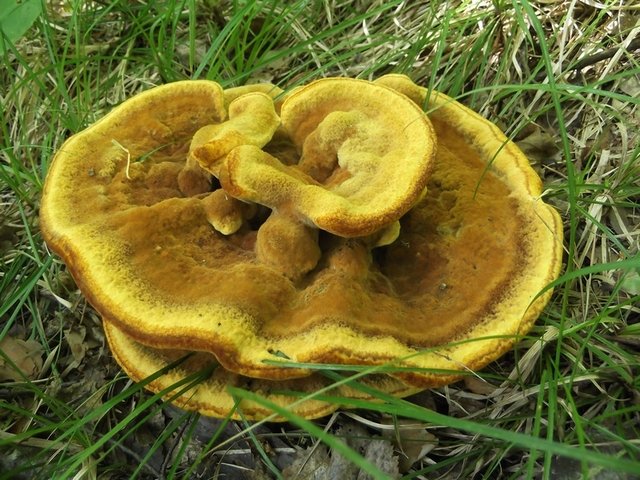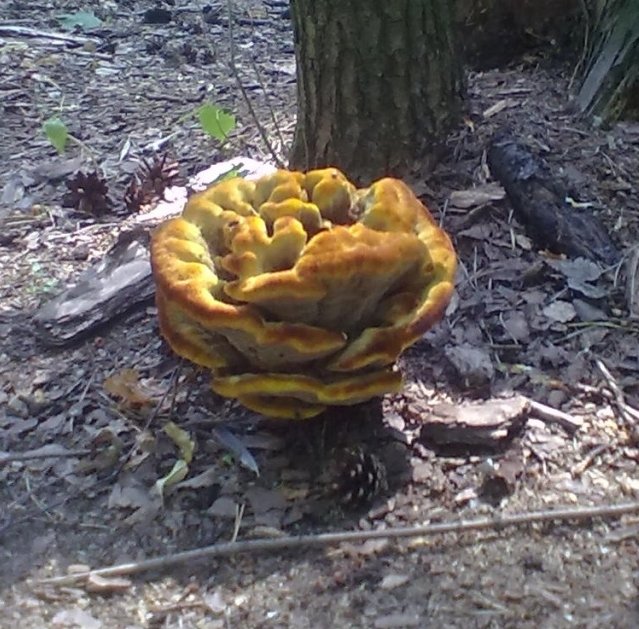Awọn akoonu
Pheolus schweinitzii (Phaeolus schweinitzii)
- Pipin: Basidiomycota (Basidiomycetes)
- Ìpín: Agaricomycotina (Agaricomycetes)
- Kilasi: Agaricomycetes (Agaricomycetes)
- Ipele Subclass: Incertae sedis (ti ipo ti ko daju)
- Bere fun: Polyporales (Polypore)
- Idile: Fomitopsidaceae (Fomitopsis)
- Genus: Phaeolus (Feolus)
- iru: Phaeolus schweinitzii
:
- Boletus sistotrema
- Calodon spadiceus
- Cladomer sponge
- Daedalea suberosa
- Hydnellum spadiceum
- Inonotus habernii
- Mucronoporus sponge
- Ochroporus sistotremoides
- Phaeolus spadiceus
- Xanthochrous waterlotii

Schweinitz’s tinder fungus (Phaeolus schweinitzii) is a fungus of the Hymenochetes family, belongs to the genus Theolus.
Ita Apejuwe
The fruit body of the Schweinitz tinder fungus consists only of a cap, but individual specimens may have a short and thick leg. More often, one leg of this species holds several hats on itself.
The cap itself can have a different shape and is irregularly lobed, semicircular, rounded, saucer-shaped, funnel-shaped, rounded or flat. Its diameter can reach 30 cm, and thickness – 4 cm.
The structure of the cap surface is felt, bristly-rough, often hairs or a light edge are visible on it. In young fruiting bodies, the cap is painted in dark grayish-yellow, sulfur-yellow or yellow-rusty tones. In mature specimens, it becomes rusty or brown-brown. In old mushrooms, it becomes dark brown, down to black.
The surface of the fruit body is shiny, in young mushrooms it is lighter in color than the cap, gradually the color is compared with it.
The hymenial layer is sulfur-yellow or simply yellow, becoming brown in mature specimens. The hymenophore is a tubular type, and the color of the tubules is similar to the color of the spores. As the fruiting bodies mature, the walls of the tubules become thinner.
Schweinitz’s tinder fungus (Phaeolus schweinitzii) has barely noticeable pores, the diameter of which does not exceed 4 mm, and in most cases is 1.5-2 mm. In shape, they are rounded, similar to cells, angular. When the mushroom ripens, they become sinuously patterned, have jagged edges.
The leg is either absent altogether, or short and thick, tapering downwards and characterized by a tuberous shape. It is located in the center of the cap, has an edge on its surface. The color at the stem of the Schweinitz tinder fungus is brown.
The mushroom has a spongy and soft flesh that is often flabby. Initially, it is well saturated with moisture, gradually becoming more solid, stiff and permeated with fibers. When the fruiting body of the tinder fungus Schweinitz dries out, it begins to crumble, becomes very fragile, light and fibrous. The color can be orange, yellow, brownish with an admixture of yellow, rusty or brown.

Grebe akoko ati ibugbe
Schweinitz’s tinder fungus (Phaeolus schweinitzii) is an annual mushroom that is characterized by rapid growth. It can grow both singly and in small groups. Fruiting begins in summer, continuing through autumn and winter (differently in different regions of its range).
Most often, Schweinitz’s tinder fungus is found in the territories of Western Europe, in the European part of Our Country, and also in Western Siberia. This mushroom prefers to grow in the northern and temperate regions of the planet. It is a parasite because it settles on the roots of coniferous trees and causes them to rot.
Wédéédé
Schweinitz’s tinder fungus (Phaeolus schweinitzii) is an inedible mushroom because it has too hard flesh. In addition, the described species has no smell and taste.
Iru iru ati iyatọ lati wọn
Young fruiting bodies of Schweinitz’s tinder fungi look like sulfur-yellow tinder fungi. But it is difficult to confuse the described species with other mushrooms, because it has a soft and watery texture, gutting with the help of viscous liquid droplets.
Alaye miiran nipa olu
The name of the species was given in honor of Lewis Schweinitz, a mycologist. Schweinitz’s tinder fungus contains special pigments that are used in the industrial sector for coloring.









